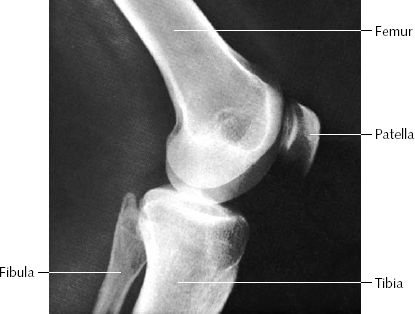
Are you an athlete that is constantly pushing your body to the limit? Do you suffer from knee pain that just won’t go away? Knee injuries are extremely common and can often be quite debilitating. If you suffer from a knee injury, it is important to understand the different types of injuries and how to treat them properly. In this article, we will discuss the most common knee injuries and the treatments available for each one. We hope this information will help you recover from your injury as quickly as possible. Let’s get started.
Causes of Knee Injuries
The knee is a complex joint that is made up of the femur (thigh bone), tibia (shin bone), patella (knee cap), and numerous ligaments and tendons. When any of these structures are damaged, it can cause pain and instability in the knee joint.
A knee injury affects the knee joint and can be caused by a single traumatic event, such as a fall or car accident, or it can develop over time due to repetitive stress on the joint. While there are many causes of knee injuries, understanding the treatment options is the first step in recovery since you will know what will work best for you. Ensure you receive the right diagnosis and treatment by visiting an orthopedic surgeon treating such injuries.
Types of Knee Injuries
There are many different types of knee injuries, but some are more common than others. The most common knee injuries include:
ACL Injury
The ACL (anterior cruciate ligament) is a strong tissue band connecting the femur to the tibia. It stabilizes the knee and prevents it from hyperextending. An ACL injury is often caused by sudden stops or changes in direction, landing from a jump incorrectly, or contact with another player during a sport. Symptoms of an ACL injury include knee pain, swelling, and instability.
Patellar Tendonitis
Patellar tendonitis is an inflammation of the patellar tendon, which connects the kneecap to the shinbone. It is often caused by repetitive stress on the knee, such as from running or jumping. Symptoms of patellar tendonitis include knee pain, tenderness, and stiffness.
Meniscus Tear
The meniscus is a C-shaped piece of cartilage that acts as a shock absorber between the femur and tibia. A meniscus tear is a common knee injury that can be caused by a single traumatic event or repetitive stress on the joint. Symptoms of a meniscus tear include knee pain, swelling, and stiffness.
Fractures
A fracture is a break in the bone. A knee fracture can be caused by a direct blow to the knee, such as from a car accident or by a fall onto the knee. Symptoms of a knee fracture include severe knee pain, swelling, and bruising.
Knee bursitis
Bursitis is the inflammation of a bursa, which is a small sac of fluid that acts as a cushion between bones and tendons. Knee bursitis often occurs with overuse injuries, such as running or jumping. Symptoms of knee bursitis include knee pain, tenderness, and stiffness.
How to Treat Knee Injuries
There are various ways to treat knee injuries, depending on the type and severity of the injury. The most common treatments include:
Rest
Rest is often the best way to treat a small knee injury. The process involves taking a break from all activities that stress the knee, such as running or playing sports. This will allow the injury to heal and prevent further damage to the joint. Rest can be used to treat almost all knee injuries, including ACL tears, meniscus tears, and patellar tendonitis.
Ice
Ice is a common treatment for knee injuries because it helps reduce pain and swelling. Apply ice to the injured knee for 20 minutes at a time, several times a day. Do not apply ice directly to the skin; instead, wrap it in a towel or cloth. You can use ice to treat knee injuries such as ACL tears, meniscus tears, patellar tendonitis, and bursitis.
Compression
Compression helps to reduce swelling by applying pressure to the injured knee. Use an elastic compression bandage or wrap to apply pressure to the joint. You can use compression to treat ACL, meniscus, patellar tendonitis, bursitis, and fractures.
Elevation
Elevation helps to reduce swelling by raising the injured knee above the level of the heart. This allows gravity to pull the fluid away from the injury site. You can use elevation to treat ACL, meniscus, patellar tendonitis, bursitis, and fractures.
Medication
Over-the-counter medication such as ibuprofen (Advil) or naproxen (Aleve) can be used to help reduce pain and inflammation. These medications are most effective when used in combination with ice and elevation. You can use medication to treat all types of knee injuries.
Surgery
Surgery is a major treatment used to treat severe knee injuries, such as ACL tears and meniscus tears. It is often used when other treatments, such as rest, ice, and physical therapy, have failed to provide relief. Surgery involves repairing or replacing the damaged tissue.
Knee injuries can range from minor to severe. The best way to treat a knee injury is to seek medical attention from a doctor or orthopedic surgeon. They can diagnose the injury and recommend the best treatment plan.
Factors to Consider When Choosing a Treatment
When choosing a treatment for your knee injury, there are several factors to consider, such as:
- The type of injury: Different injuries require different types of treatments.
- The severity of the injury: More severe injuries often require more aggressive treatment, such as surgery.
- Your age and activity level: Younger, more active people may require different treatment than older, sedentary people.
- Your overall health: Your health can affect your ability to tolerate certain treatments, such as surgery.
- Your treatment preferences: Some people may prefer non-surgical treatments, while others may be willing to undergo surgery to treat their knee injury.
The type of treatment that is most effective for you will depend on the type and severity of your injury and your age, activity level, overall health, and treatment preferences.
Knee injuries can range from minor to severe. The best way to treat a knee injury is to seek medical attention from a doctor or orthopedic surgeon. They can diagnose the injury and recommend the best treatment plan. Ensure to consider different factors when choosing a treatment for your knee injury. You and your doctor can work together to develop the best plan to treat your knee injury and help you get back to your life pain-free.

















Follow Us